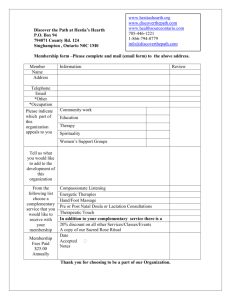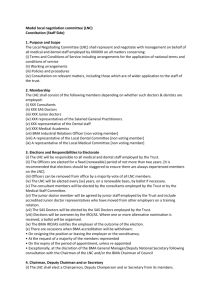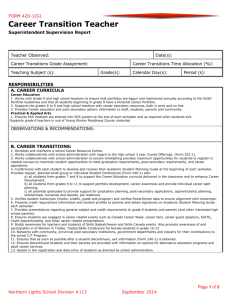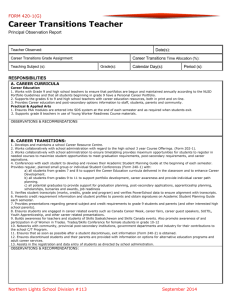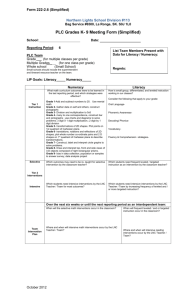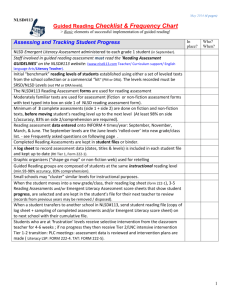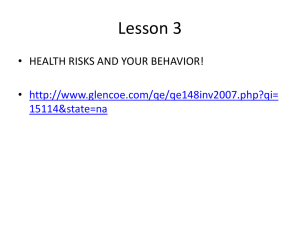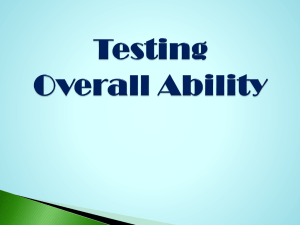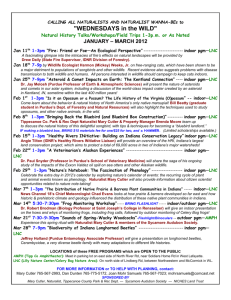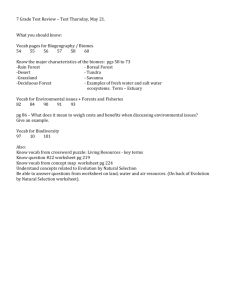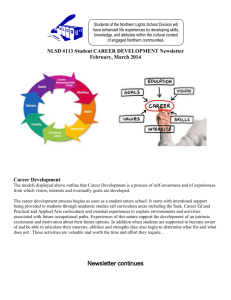Form222-4LiteracyLearningSupportPlan
advertisement
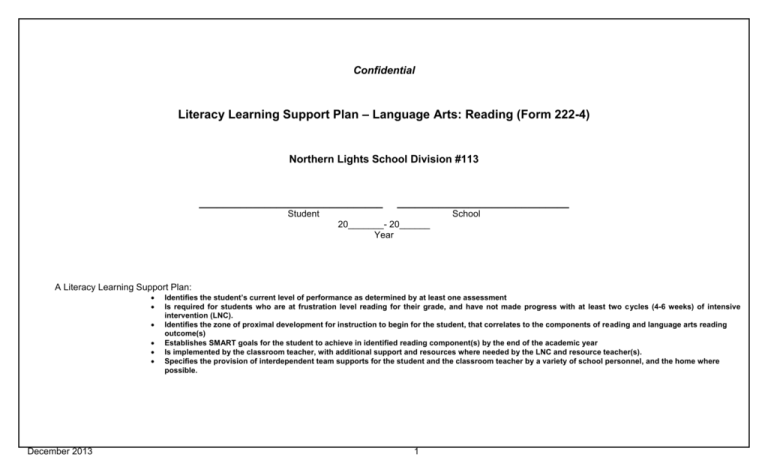
Confidential Literacy Learning Support Plan – Language Arts: Reading (Form 222-4) Northern Lights School Division #113 _______________________________ _____________________________ Student School 20_______- 20______ Year A Literacy Learning Support Plan: December 2013 Identifies the student’s current level of performance as determined by at least one assessment Is required for students who are at frustration level reading for their grade, and have not made progress with at least two cycles (4-6 weeks) of intensive intervention (LNC). Identifies the zone of proximal development for instruction to begin for the student, that correlates to the components of reading and language arts reading outcome(s) Establishes SMART goals for the student to achieve in identified reading component(s) by the end of the academic year Is implemented by the classroom teacher, with additional support and resources where needed by the LNC and resource teacher(s). Specifies the provision of interdependent team supports for the student and the classroom teacher by a variety of school personnel, and the home where possible. 1 Learning Support Plan – English Language Arts: Reading Reading Level Phonemic Awareness Phonics Semantics / Vocabulary Grammar / Syntax Comprehension Enter relevant TOLD categories: P4 (ages 4-7) or I4 (ages 8-17yrs). Language Component Also include descriptor (very poor/poor/low average etc.) Assessments (select assessment data relevant to age/level of student to show current level of performance) NLSD/SRSD Levels 1-27 NLSD#113 Reading Assessment (Running Record) Accuracy __ % Fluency notes: ________________ Early Literacy Assessment - rhyme recognition: /5 - rhyme production: /5 - alliteration awareness: /5) - blending: /5 Instructional Reading Level: ____ Early Literacy Assessment - letter name: /26 - letter sound: /26 - letter recognition: /26 Nonsense words /60 (or Names Test /70) NLSD Sounds & Letters Assessment /43 PPVT-4A/B standard score: ______ - Receptive vocab. - Shared/interactive language study: Word families: onsets/rimes. - Differentiated developmental spelling - Reading /chanting + Letter/word hunts, cloze, - Word sorts, Word wall games (I Spy), WordBuilding, word games, - Shared Reading big books with rhyme, rhythm, repetition, alphabet books Other: - Oral language activities: retell/recall, discussion - Essential Academic Vocabulary/ Morphology - preview/review concepts and vocabulary using realia and visuals, picture sorts/ word sorts, semantic concept attainment ladder/circle, dictogloss, Frayer model, word sort, captions/labels, cloze, semantic mapping, - Word Bank/ Word wall work, PWIM, Learning logs/ dialogue journals - Writing Workshop (writing process) TOLD-4 scale score 1-20 - Picture vocab.: ______ - Relational vocab.: ______ - Oral vocab or Multiple Meanings.: ______ TOLD-4 scale score 1-20 - Syntactical understand;.___ or Sentence Comb _____ - Sentence Imitation: ____ or Word Order _____ - Morph Completion: ____ NLSD/SRSD Levels 1-27 NLSD#113 Reading Assessment Comprehension % Early Literacy Assessment - Oral Language: /15 SMART GOALs (re: ZPD) Action Plan (re: SMART goals) (Highlight strategy focus) Classroom Teacher(s): _____________________ Suggested Instructional Strategies* A)- whole group B)- small group/ Individual *Teach via Gradual Release of Responsibility: Modelled/ Shared / Guided/ Independent Practice Use Think Alouds to show: - Using Fix-up strategies: sound out/peel off, chunking, skip/read on, reread, cross-check. - Independent reading (easy), writing (composing) - Interactive / Shared writing, reading own writing - Fluency: Listening to good readers (read-aloud, listening centre) Timed rereading, echo/choral reading, Readers Theatre Other: - Phonemic Awareness / interactive oral language activities: -rhyming, segmenting syllables: clapping & other physical response, singing/chanting, -listening to stories & poetry ( books with rhyme, rhythm & repetition,) - Language experience drawing/writing stories - reading/retelling own stories, - Oral Cloze Other: Other: Additional supports (LNC/ RT) __________________________ Follow-up Plan - Assessment / Date(s), Progress Review Meeting Date(s): December 2013 2 - Oral language activities: retell/ recall, discussion. - Writing process: proofreading/editing - Use of mentor texts as models - Syntax Surgery - Cloze - Teach cohesion Links, transition words, idioms, - homonyms, synonyms - Morphology – root words prefixes/suffixes etc. Other: - Think Alouds: show Retell/recall reading ( by oral, written response, use of graphic organizers,) - Teach comprehension strategies: Predict, Connect prior knowledge, Visualize, Infer, Summarize, Identify main points & details. - Free Voluntary Reading of high interest books - Reading independent level books (easy reading) - Writing process/ traits: proofreading/revision Other: Student: ______________________________ Attendance: _______ Grade: ______ School: ______________________________ Date: _________________ NOTES Interdependent Team Signatures Interdependent Team - Strategies, Responsibilities and Supports Classroom Teacher, LNC Teacher, Resource Teacher and in-school Administrator: Participate in TAT (Interdependent team) meeting to collaboratively develop a Learning Support action plan based on student’s needs identified through assessment. Discuss instructional strategies, resources and supports. Schedule regular progress review meetings and adjust plan as necessary. Classroom Teacher: Carry out LSP action plan including identified targeted instruction and assessments. Begin instruction at the student’s zone of proximal development (ZPD), using Gradual Release of Responsibility (GRR) instructional approaches. Record assessment data. Meet with team for scheduled progress review and collaboratively revise plan and make any agreed upon adjustments. LNC Teacher: Initial assessment, and collaborative development of the Learning Support Plan. Facilitate implementation of the action plan by providing coaching, support and resources to classroom teacher as identified in the action plan. Follow-up assessment, record data. Meet with team for scheduled progress review and collaboratively revise plan and make any agreed upon adjustments. Resource Teacher: Additional assessment, resources and coaching as needed according to the Learning Support Plan. Meet with TAT team for scheduled progress review and collaboratively revise plan and make any agreed upon adjustments. In-school Administrator: Collaborate with teachers to develop the LSP. Monitor/supervise to support implementation of the LSP. Student Support Worker: Contact home on days when student has unexcused absences from school. December 2013 3 Classroom Teacher: ____________________________________________ In School Administrator: ________________________________________ LNC Teacher: __________________________________________________ Resource Teacher: _____________________________________________ Student Support Worker: ________________________________________ Other support (specify): _________________________________________
